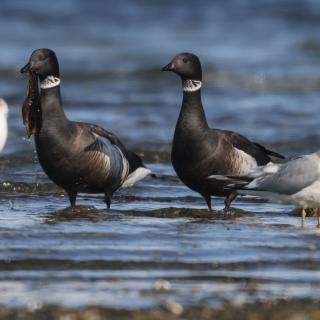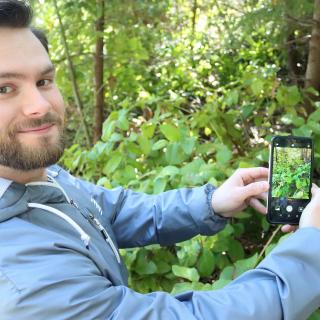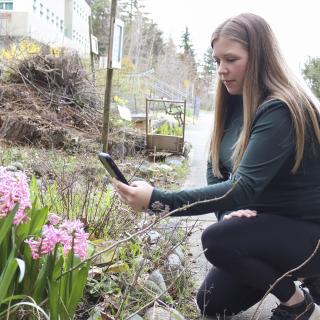Long before British Captain George Henry Richards named Mount Arrowsmith in the late 1800s, the largest mountain on southern Vancouver Island had many distinctive titles given to it, depending which side the 1,819 metre peak was viewed from. In 2000, the Arrowsmith moniker was used in the designation of the Mount Arrowsmith Biosphere Region (MABR), a UNESCO recognized biosphere reserve.
The MABR is managed by a Roundtable of representatives from First Nations, local governments, stakeholders, and citizens, and the group is committed to taking action on a wide range of regional issues relating to sustainable development, education and conservation. Included in this is the recognition and re-establishment of Indigenous place names that apply to features and places in the region.
Roundtable members Dr. Pam Shaw, Director of VIU’s Master of Community Planning, Geraldine Manson, VIU Elder-in-Residence, Office of Aboriginal Education, Ashley Van Acken, and Graham Sakaki, MABRRI Research & Community Engagement Coordinator have been awarded a $47,000 Social Sciences and Humanities Research Council (SSHRC) Indigenous Research Capacity and Reconciliation Connection Grant for the Mount Arrowsmith Biosphere Region (MABR) project "Coast Salish Traditional Place Names: Reconciling a Colonial Past in the UNESCO-designated Mount Arrowsmith Biosphere Region."
The project will engage with Elders, Knowledge Holders, the MABR Roundtable members, as well as the wider community, in conversations on place names and identity.
Sakaki, says as we move into the United Nation’s International Year of Indigenous languages 2019, the MABR and its affiliated research institute are committed to exploring place names within the biosphere region in respectful collaboration with Qualicum, Snaw-Naw-As, and Snuneymuxw First Nations.
“Through these partnerships, we are learning about the cultural diversity of names that apply to Mount Arrowsmith. Describing the mountain from the west coast of Vancouver Island, Indigenous communities called it Kulth-ka-choolth (meaning: jagged face). Here on the east coast, the Coast Salish refer to it as either A'alh'hume' or TS'xuliqw'. ”
The research grant will fund step one of the project, updating and amending two MABR documents: Guiding Principles for Collaboration with First Nations and the MABR Roundtable Culture of Engagement. These two documents were formed together with Qualicum First Nation and Snaw-Naw-As First Nation in 2015. The MABR Roundtable members are interested in opening them up for further review and including the viewpoints of Snuneymuxw First Nation.
Shaw adds, “This grant will facilitate the revision of the guiding principles and we will use these new protocols to guide our place naming project in the biosphere region.”
“We can’t move ahead without recognizing the importance of language, it’s in our stories, in our songs, in our everyday speech,” says Manson. “What we name our hills, our mountains, our rivers contains information about that place. As an oral society, the names chosen for physical sites, carry history, environmental understandings, information on was it a hunting or fishing village, natural knowledge and even directional guides for travelling the land. For instance, when speaking of Departure Bay, Snuneymuxw call it Stililup, which means deep waters. Using Indigenous names keeps all of that information alive.”
The Coast Salish Traditional Place Names project is a partnership between all members of the Mount Arrowsmith Biosphere Region Roundtable.
-30-
MEDIA CONTACT:
Annette Lucas, Communications Officer, Vancouver Island University
O: 250.741.2020 | C: 250.618.7296 | E: Communications@viu.ca





